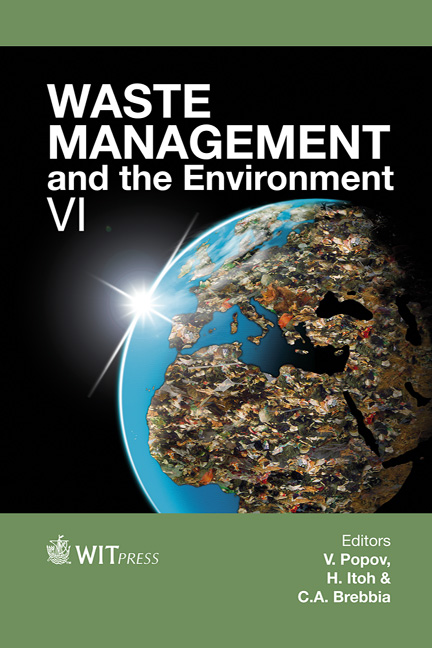On The Possibility Of Using Vitrified Forts As Anthropogenic Analogues For Assessment Of Long-term Behaviour Of Vitrified Waste
Price
Free (open access)
Transaction
Volume
163
Pages
12
Page Range
225 - 236
Published
2012
Size
1012 kb
Paper DOI
10.2495/WM120211
Copyright
WIT Press
Author(s)
R. Sjöblom1, H. Ecke2 & E. Brännvall1
Abstract
An information survey was conducted in the areas of natural analogues, vitrified forts, combustion technology and vitrified waste. The main purpose was to identify if vitrified stone material in hillforts might be used as anthropogenic analogues for glass containing waste. Such comparisons are needed in order for predictions to be made regarding the long-term integrity of the waste forms. The scope was to compare the chemistry as well as the processes used for the generation of the glasses. It was found that the vitrified forts contain glass material with wide variations in composition of the major elements. They cover and exceed those in the glasses made of waste with only the exception of phosphorus. Natural glasses as well as archaeological glasses show much narrower ranges of compositions, and they do not coincide with those of the glasses containing waste. Quality of heat analyses indicated that it is likely that the stone material in the forts was melted for the purpose of obtaining long-lasting structures. This narrows the range of possible processes used, and facilitates reconstruction of the ancient methods by means of testing. This, in turn, provides possibilities of comparison between ancient and modern methods, which can then be used as a basis for validation of the use of the analogue. Keywords: long-term, analogue, vitrification, hillfort, glass, leaching. 1 Introduction Sustainability implies that waste is recycled as far as is reasonably achievable, and that the residues that cannot be used are landfilled in such a way that no
Keywords
long-term, analogue, vitrification, hillfort, glass, leaching.





